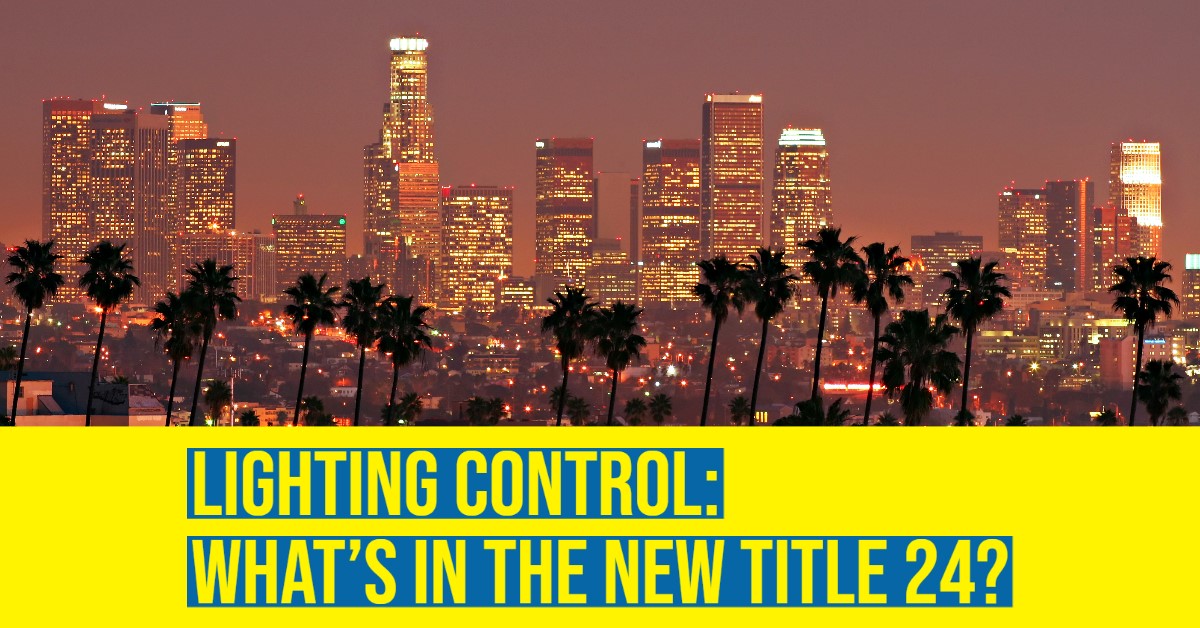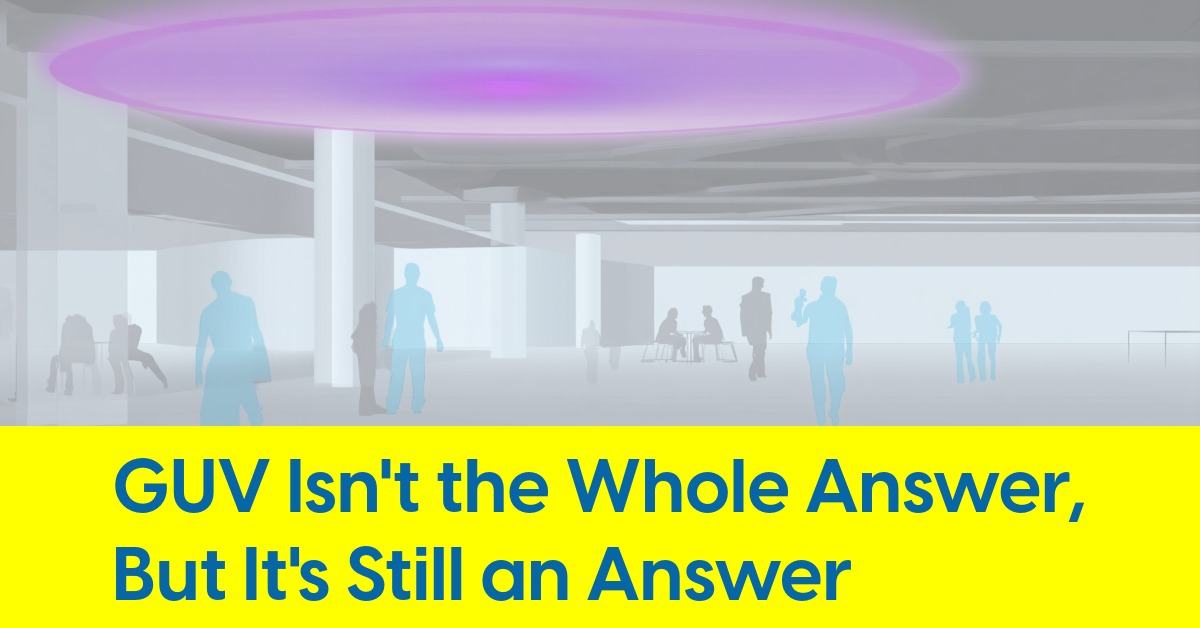October 26, 2022
Lighting Control: What’s in the New Title 24?
Author: Craig DiLouie, LC, CLCP is education director for the Lighting Controls Association
California is often the tip of the spear for nationwide energy code upgrades. Are your products and projects compliant?
On January 1, 2023, the 2022 version of California’s energy code—Title 24, Part 6 of the Building Standards Code—takes effect, superseding the previous 2019 version. In terms of lighting controls, the numerous changes include various clarifications and tuning along with two major provisions requiring occupant-sensing in offices larger than 250 sq.ft. and demand-responsive lighting controls. Designers and specifiers need to understand these changes before they begin working on code-covered new construction and alteration projects that will go out for permit in California in 2023.
Commercial building energy codes regulate the design energy efficiency of nonresidential buildings. A majority of states adopt model codes and standards, but California developed its own. Generally updated every three years since 1995, this energy code is progressive, often leading the nation in energy-saving measures. It is also well enforced via the permit application process at local building departments.
This article highlights two major changes to Title 24, Part 6 related to lighting controls in its 2022 version, which is likely to remain in effect until at least December 31, 2025. For detailed information on all changes, consult the code.
Title 24 and lighting controls
Title 24, Part 6 allows either a prescriptive (compliance within a set of choices or restrictions) or performance (building modeling using software) compliance path. Both feature lighting provisions that are mandatory, the large majority of these related to installation of interior and exterior lighting controls.
Required lighting controls include manual area, multilevel, automatic shutoff, automatic daylighting, and demand-responsive controls. These are broken out as interior lighting controls (Section 130.1) and exterior lighting controls (130.2). Three other relevant sections include demand response (Section 110.12), acceptance testing requirements for installed lighting controls (Section 130.4), and acceptance testing procedures (Nonresidential Appendix 7.6, 7.7.5.2, and 7.8).
The 2022 version of Title 24, Part 6 contains numerous changes to its lighting sections, notably updates for outdoor lighting zones, updates to the nonresidential lighting power allowance tables, changes to demand response, and new requirements for occupancy sensing for office spaces (in addition to clarification for occupancy sensors used with HVAC), along with numerous revisions for clarity and consistency. Additionally, there are now mandatory requirements for some buildings to include photovoltaics and battery storage, and multifamily buildings were given their own code sections as an application, which added significantly to the body of the code.
Occupant sensing in offices
Occupant-sensing controls are required in certain spaces such as offices 250 sq.ft. or smaller, while in others, they present an option to comply with automatic lighting shutoff requirements. These devices automatically turn Off lighting when the area is unoccupied. The device may also be designed to automatically turn On lighting.
The 2022 version of Title 24, Part 6 now requires occupant sensors control the general lighting in offices larger than 250 sq.ft. and requires that each sensor be configured in a control zone no larger than 600 sq.ft. These requirements are similar to provisions in both the 2018 and 2021 versions of the International Energy Conservation Code. Note that undershelf and furniture-mounted task lighting controlled by a local switch and either a time switch or occupant sensor are exempted.
Here’s how it works:
-
Upon detecting occupancy, the sensor may automatically turn the zone’s lighting On to any level up to full power.
-
Within 20 minutes of detecting a lack of occupancy, lighting power in the sensor’s zone must uniformly reduce by at least 80 percent of full power.
-
If sensor status indicates all zones in the overall office area are unoccupied, the system must turn all lights in all zones Off within 20 minutes.
The light reduction of at least 80 percent in unoccupied zones ensures energy savings are achieved while also enabling the general lighting to provide some illumination when neighboring zones are still occupied.
While zones cannot be larger than 600 sq.ft., designers should consider basing zones on the lighting layout, which may entail designing smaller zones. Either way, this code change is expected to encourage adoption of luminaire-level lighting controls and wireless networking capability. If the luminaires feature an embedded sensor able to enact luminaire control autonomously, each luminaire can be regarded as its own control zone while interacting with other zones wirelessly to enact a room-based shutoff strategy.
Demand-responsive lighting controls
Title 24, Part 6’s demand response requirements (Section 110.12) underwent significant revision in the 2022 version. In review, demand response is a strategy by which lighting is automatically reduced in response to a demand response signal, which may originate at the building’s electric utility.
Previous to the 2022 version, demand-responsive lighting controls were required for buildings that are 10,000 sq.ft. and larger. With the 2022 version, they are now required for projects with general lighting loads that are 4000W and larger.
An explicit exception is spaces where health or life safety/ordinance/regulation do not permit general lighting to be reduced. The general lighting power in these spaces is not counted toward the 4000W threshold. Another exception is alterations and additions that do not exceed 4000W. Additionally, the demand-responsive controls are subject to the requirements of Section 130.1(b), which covers multilevel controls and therefore apply additional exceptions specific to Section 130.1(b); areas less than 100 sq. ft, or with 0.5W/sq. ft. or lower lighting power density, restrooms, and any non-general lighting are excluded.
The requirements include:
-
The signal may use a wired or wireless protocol as long as it is bi-directional.
-
In response to the signal, the lighting controls must demonstrate a lighting power reduction in controlled areas of at least 15 percent below installed full lighting power. This is to be confirmed by compliance testing.
-
A certified OpenADR 2.0a or 2.0b Virtual End Note (VEN) must be included that is certified by the manufacturer to automatically implement the required control function. Alternately, the lighting control manufacturer must certify that their system is capable of responding to a demand response signal from another system’s OpenADR 2.0b Virtual End Node.
-
If communications are disrupted, demand-responsive controls must continue to perform all other specified control functions.
Additionally, the 2022 changes to demand-responsive controls includes a new requirement for incorporating plug loads. This means if the building is required to both have a demand-responsive lighting control system and automatic receptacle control (Section 130.5(d)), the automatically controlled receptacles must then be capable of being turned Off in response to a signal from the demand response system.
This ensures the capability of incorporating plug load control into demand response, though it is not a requirement for the owner to implement it.
Also note that while small offices may not be required to have demand-responsive lighting, controlled receptacles in these spaces may be required to connect to the demand-responsive control system if DR is required for the overall project.
Learn Title 24
This article focused on two major changes to Title 24, Part 6 taking effect in 2023. Designers and specifiers should familiarize themselves with full text of these changes and the many other updates to the lighting control requirements.
For more information, consult the code and helpful resources such as the Lighting Controls Association’s Education Express course, Energy Code Ace, and any Illuminating Engineering Society education on the topic.
The Lighting Controls Association is a council of the National Electrical Manufacturers Association that provides education about lighting control technology and application, including articles, videos, design awards, news, resources, and Education Express, a free, 24/7 series of online courses covering everything from technology to design to commissioning.











